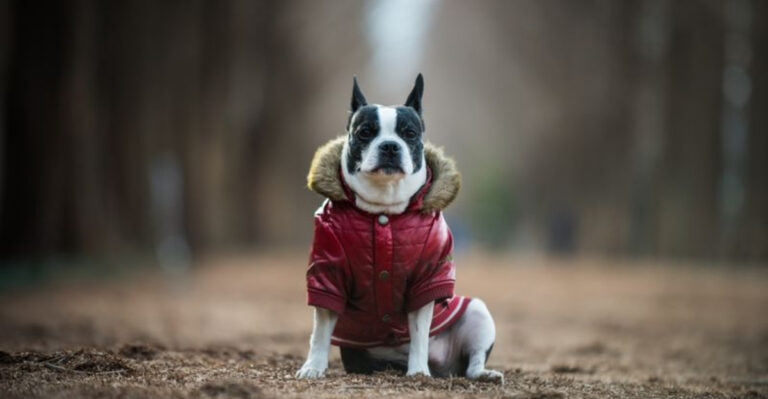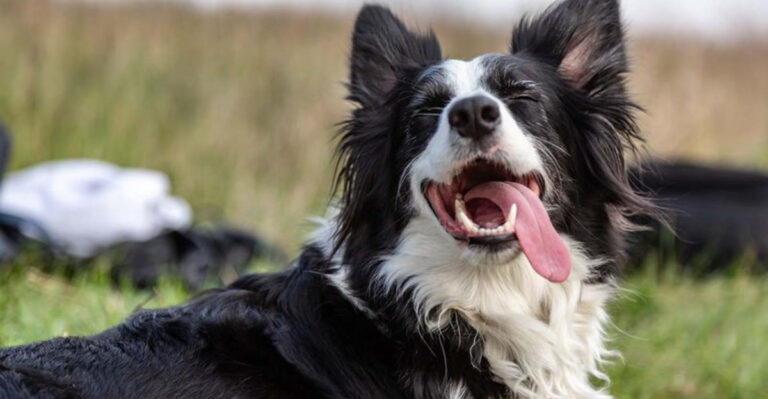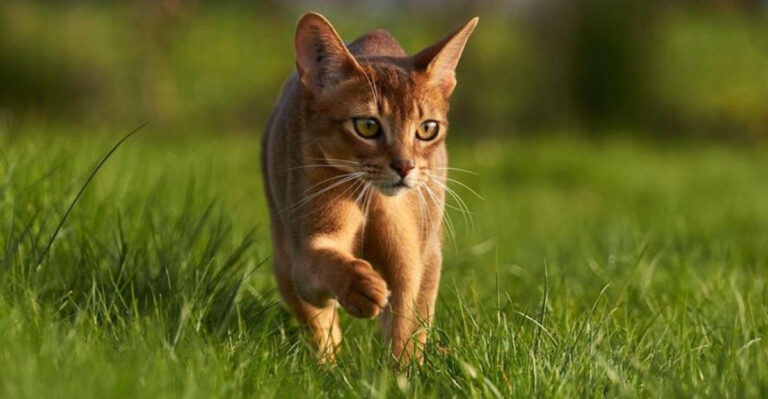24 Dangerous Animals That Every Dog Owner Should Watch Out For
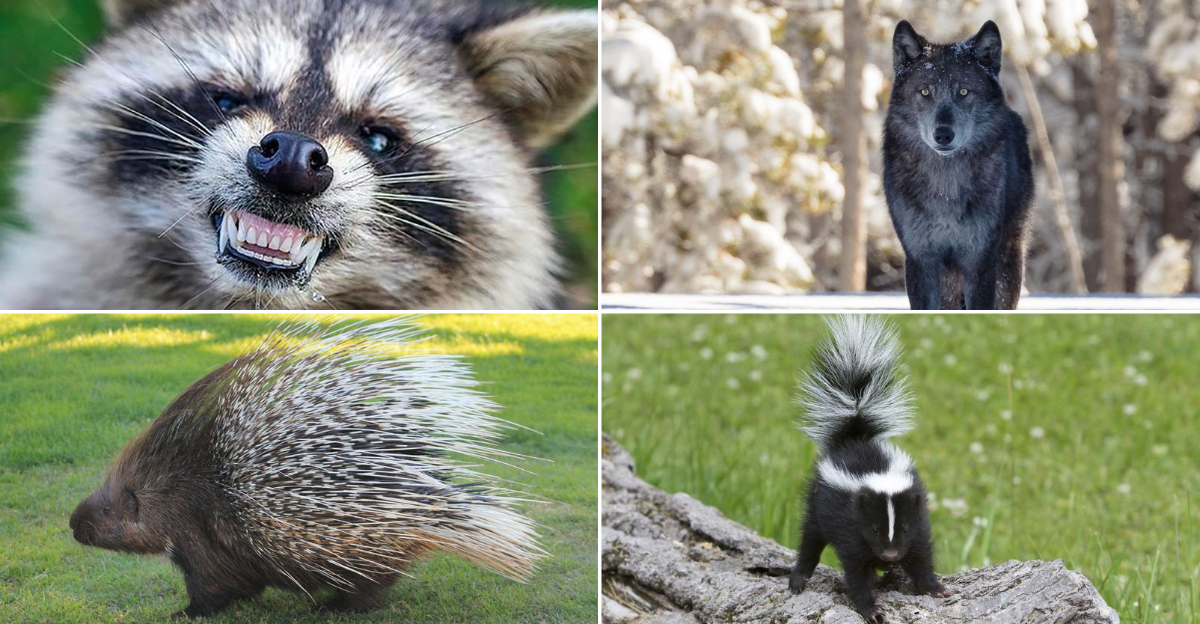
Owning a dog is a joy, but keeping them safe requires vigilance. There are animals out there that pose a serious threat to our furry friends.
Each encounter could be a tale of survival or a lesson learned too late. Here, we list the most dangerous animals every dog owner should be wary of. It’s not just about size or strength – some of these creatures have venom, stealth, or cunning that make them formidable.
From the wilds to your backyard, danger could be lurking anywhere. Equip yourself with knowledge and protect your canine companion.
1. Raccoon
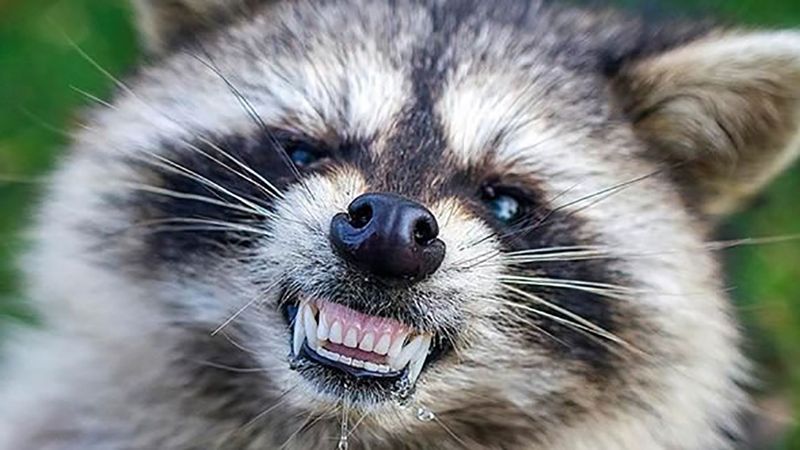
Raccoons are intelligent and adaptable, thriving in urban and suburban environments. They often search for food in garbage bins, posing a rabies risk if they bite or scratch an unsuspecting dog.
Ensure your trash cans are secured and monitor your dog during evening walks to prevent encounters. Educating yourself about raccoon behavior can help keep your pet safe.
2. Wolf
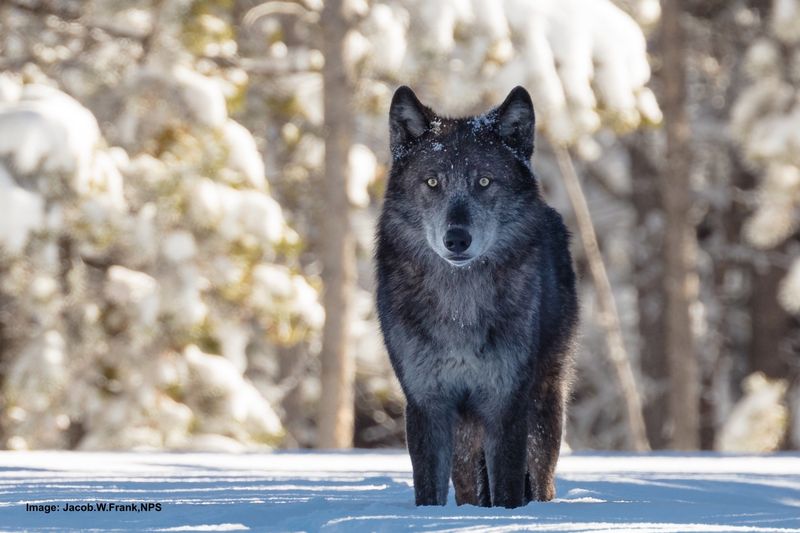
Wolves are majestic yet potentially dangerous animals for dogs. Known for their intelligence and pack mentality, wolves may see dogs as competitors or threats. Encounters are more likely in regions where wolves have a strong presence, particularly in remote and forested areas.
While wolves generally avoid humans, a curious or unsupervised dog might wander into a wolf’s territory, leading to a confrontation. Keeping dogs leashed and under control is crucial in these areas to prevent them from provoking a wolf.
If you encounter a wolf, make yourself appear larger and make noise to deter it. Slowly back away, maintaining control over your dog. Never turn your back on a wolf or run, as this could trigger its chase instinct.
3. Bear
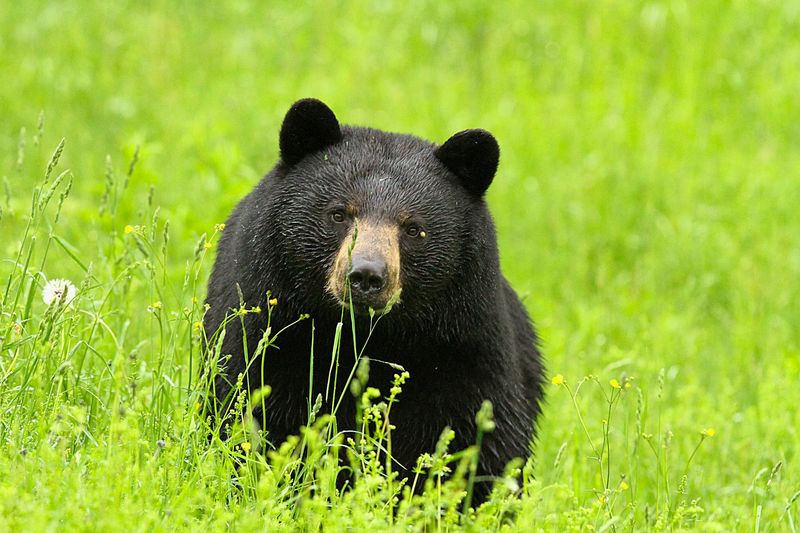
Encountering a bear during a hike with your dog can be a terrifying experience. Bears are powerful animals, capable of causing serious harm if they feel threatened. They are generally not aggressive towards humans or dogs, but can become dangerous if they are startled or if a dog attempts to chase them.
It’s essential to keep your dog on a leash when in bear country. Bears may attack if they perceive a dog as a threat, especially if cubs are nearby. In areas known for bear activity, consider carrying bear spray and making noise to alert bears of your presence, reducing the chance of surprising them.
If you spot a bear, calmly and slowly back away, ensuring your dog stays close by. Avoid direct eye contact and give the bear plenty of space to leave the area.
4. Funnel-web Spider
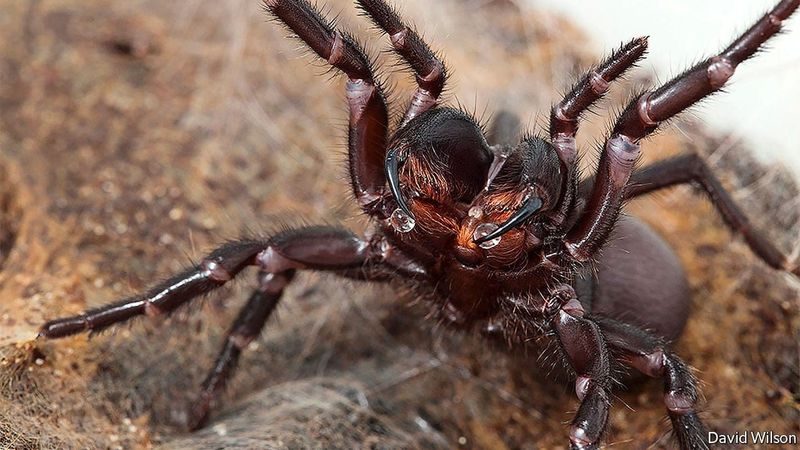
In the dark corners of Australia’s forests lurks the funnel-web spider, a creature with venom potent enough to pose a serious threat to dogs. Recognizable by its shiny black body, this spider is known for its aggressive nature and swift attack.
A bite from a funnel-web spider can lead to muscle spasms, vomiting, and in severe cases, death. Dogs that love to explore might stumble upon these spiders in their natural habitat or accidentally disturb them.
To safeguard your dog, it’s advisable to keep them away from dense underbrush and leaf litter. Quick response to a bite is vital; seek veterinary care immediately if your dog shows any signs of distress. The funnel-web spider is a reminder that danger can be small yet mighty.
5. Moose
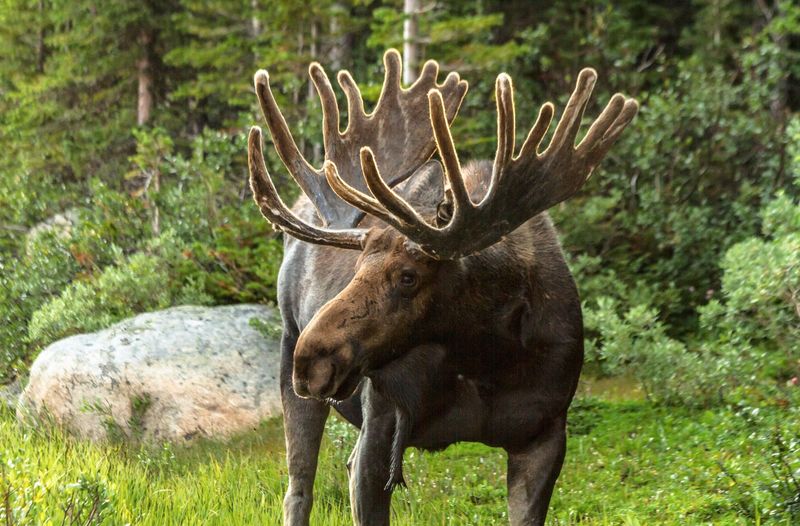
Moose might not seem like a typical threat, but their size and strength can be dangerous, especially during the rutting season or when calves are present. Dogs barking or approaching a moose can provoke aggressive behavior as the moose might see them as predators.
In regions where moose roam, keeping your dog on a leash can prevent unwanted interactions. It’s also wise to stay on well-traveled paths and avoid areas known for frequent moose sightings.
If you do encounter a moose, keep a safe distance and slowly move away. Do not allow your dog to bark or give chase, as this could provoke the moose to charge. Remain calm and give the animal space to retreat.
6. Porcupine
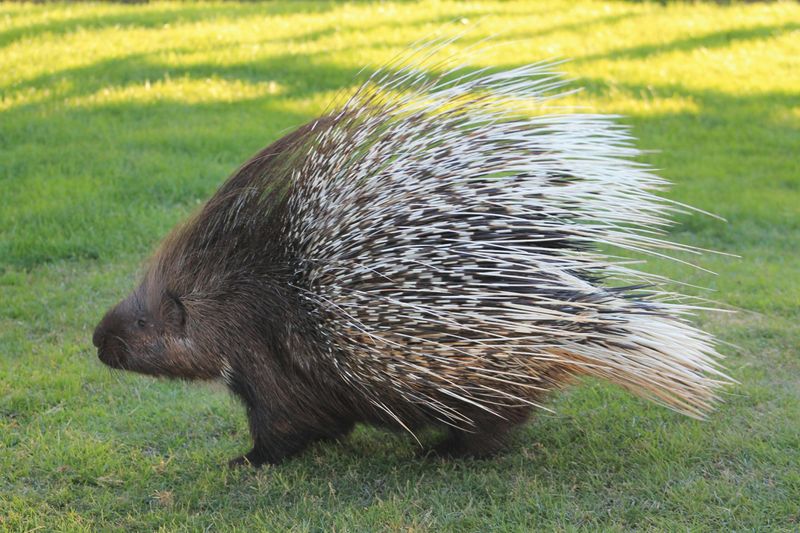
Porcupines are usually harmless but can pose a painful threat to curious dogs. Their quills can embed deeply into a dog’s skin, causing injury and potential infection. Dogs that are too inquisitive or aggressive may end up with a face full of quills.
It’s important to teach dogs to maintain distance from porcupines. Using a leash in areas known for porcupine activity can prevent unwanted encounters. If a dog approaches a porcupine, redirect its attention immediately to avoid contact.
If your dog gets quilled, it’s best to seek veterinary assistance to safely remove the quills and treat any wounds. Avoid using force to pull out quills as this can worsen the injury.
7. Skunk
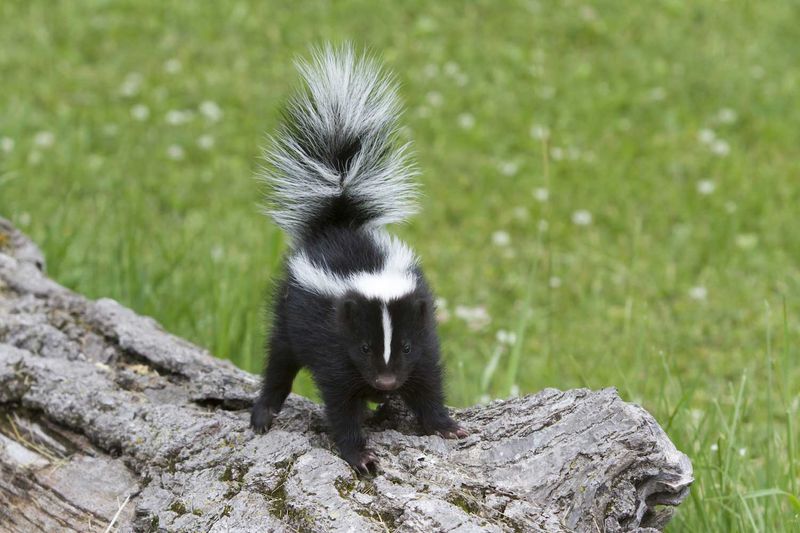
Skunks are common in areas close to human habitation, often seen in backyards and parks. Their notorious defense mechanism involves spraying a foul-smelling liquid, which can cause irritation if it gets into a dog’s eyes.
If your dog is sprayed, the smell can be hard to remove. Keep watch during evening walks, as skunks are more active at night, and try to steer clear if you spot one.
8. Blue-Ringed Octopus
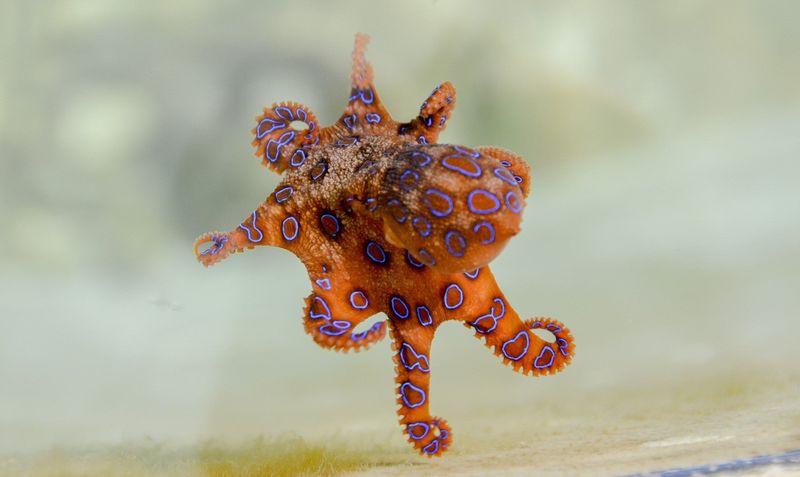
The blue-ringed octopus, though small in size, packs a deadly punch with its venom capable of causing paralysis and respiratory failure. Found in tide pools and coral reefs in the Pacific and Indian Oceans, it is a master of camouflage until threatened.
Its distinctive blue rings appear as a warning when it feels threatened. Dogs exploring coastal waters might encounter this tiny but lethal creature, posing a severe risk if bitten.
Dog owners must prevent their pets from disturbing rocky pools or handling unknown marine life. The blue-ringed octopus may be beautiful, but its danger is real. Quick action and immediate veterinary care are crucial if a dog is bitten by this oceanic menace.
9. Fire Ant
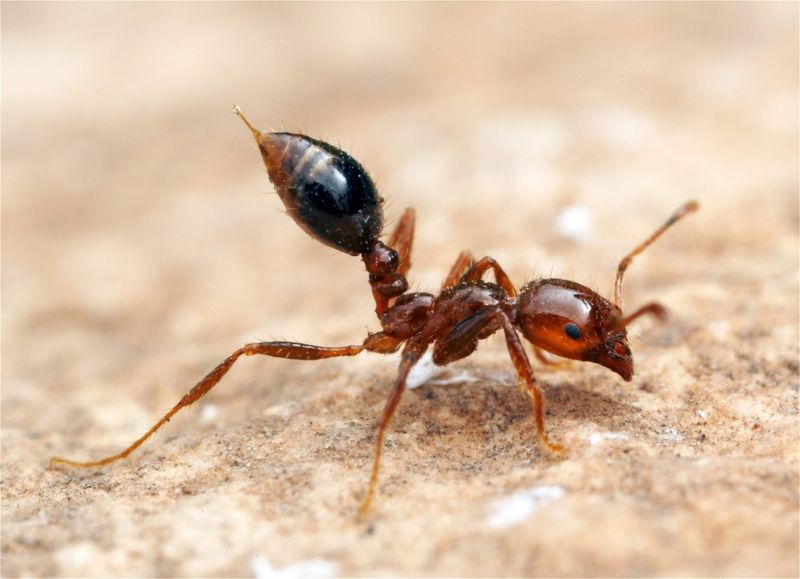
Fire ants are aggressive and can deliver painful stings when disturbed. Commonly found in the southern United States, these insects build large mounds that can be easily disturbed by curious dogs.
A sting from a fire ant can cause severe irritation and allergic reactions in some pets, making them particularly troublesome. Dogs that spend time outdoors should be supervised to prevent encounters with these ants.
Taking precautions, such as treating yards for fire ants, can help reduce the risk of unwanted interactions.
10. Brazilian Wandering Spider
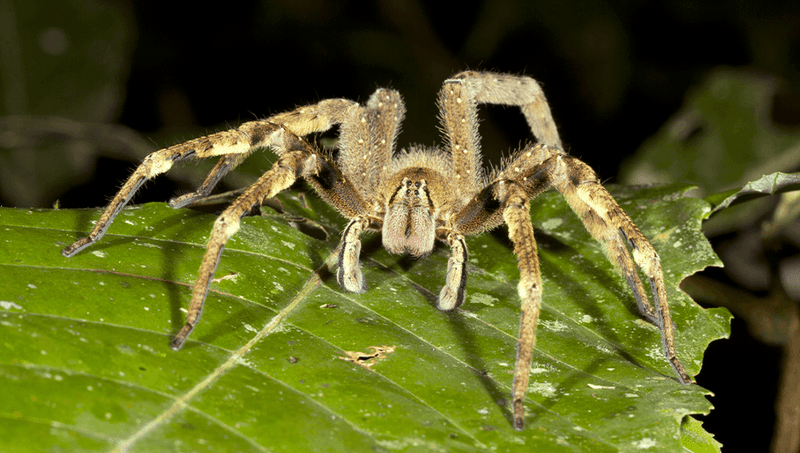
The Brazilian wandering spider, also known as the banana spider, is notorious for its aggressive behavior and potent venom. Found in tropical South America, it’s often encountered in homes, hiding in clothing or shoes.
A bite from this spider can cause intense pain, systemic effects, and even be life-threatening. Dogs curious about unfamiliar objects or spaces might disturb these spiders, leading to dangerous encounters.
Dog owners should inspect outdoor gear and home areas to prevent an unwelcome meeting with this spider. Vigilance in spider-prone regions can prevent a potentially deadly bite. Caution and awareness are crucial in regions where the Brazilian wandering spider is found.
11. Large Owl
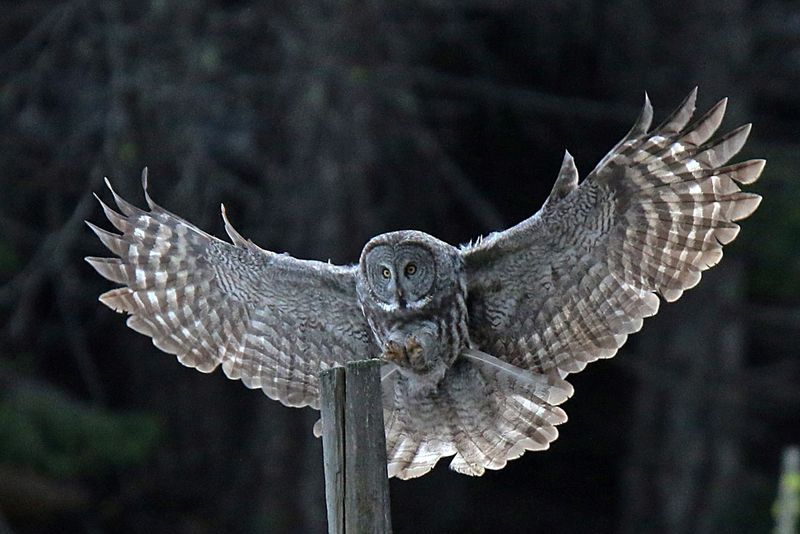
Owls are nocturnal predators with silent flight and keen eyesight, making them effective hunters. Some large species, like the Great Horned Owl, have been known to attack small dogs. Their stealth and ability to blend into the night make them a hidden danger.
To protect your pet, avoid leaving small dogs outside alone at night. Installing outdoor lighting and securing pet areas can help deter these birds. Keep an eye on your surroundings, particularly if your neighborhood has a healthy bird population.
Understanding the local wildlife and taking precautions can help keep your furry friend safe from unexpected threats.
12. Gila Monster
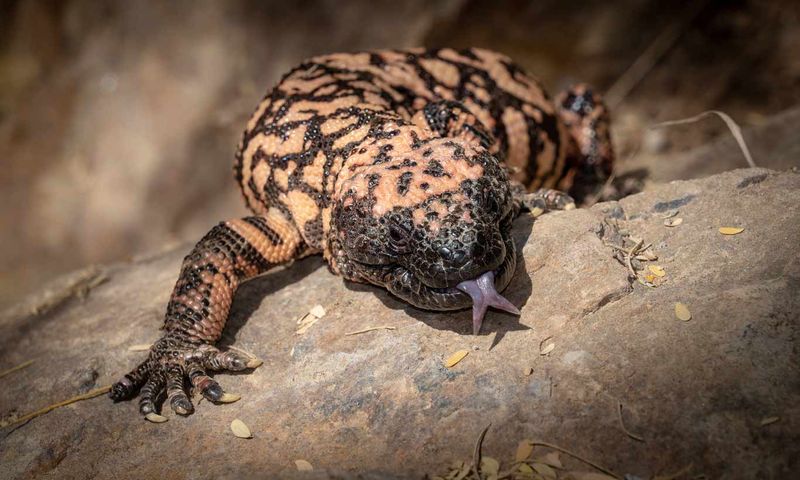
The Gila monster, native to the southwestern United States and northwestern Mexico, is one of the few venomous lizards in the world. Its venom is delivered through a bite, which can cause severe pain and swelling.
Though not typically aggressive, a startled Gila monster can pose a threat to dogs that venture too close. Dogs exploring desert areas might encounter these lizards while digging or sniffing around.
Dog owners should keep their pets on a leash and away from rocky outcrops or burrows. The Gila monster’s colorful appearance should not detract from its potential danger. Caution and respect for its habitat are necessary to avoid unwanted encounters.
13. Mountain Lion
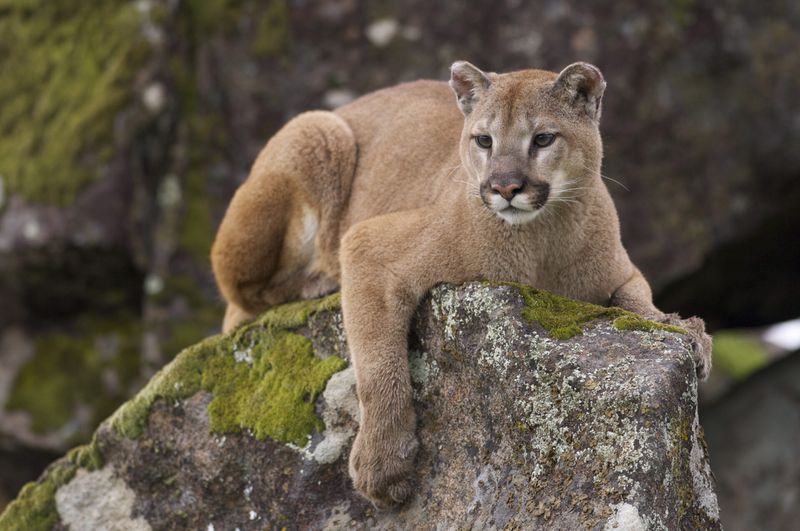
Mountain lions, also known as cougars, are solitary and elusive predators native to the Americas. They typically avoid human contact but can pose a serious threat to pets, especially in areas adjacent to their natural habitats.
If you live near mountainous regions, be cautious during dusk and dawn when these cats are most active. Keeping dogs indoors during these times is advisable. If you encounter a mountain lion, make yourself appear larger and make loud noises to scare it away.
These big cats are powerful and agile, so it’s crucial to be mindful of your dog’s whereabouts when hiking or camping.
14. Tsetse Fly
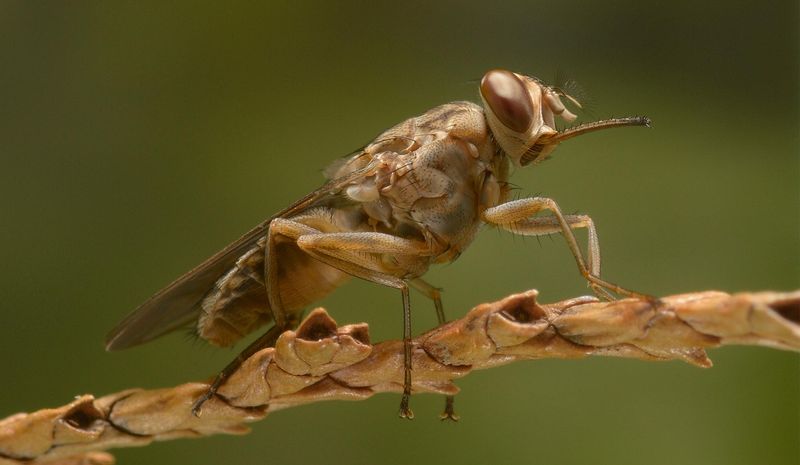
The tsetse fly, predominantly found in sub-Saharan Africa, is notorious for transmitting trypanosomiasis, or sleeping sickness, which can affect both humans and animals. This disease can lead to severe neurological symptoms and be fatal if untreated.
Dogs traveling with their owners in regions where tsetse flies are prevalent may be at risk of bites and subsequent infection. The fly’s role in spreading disease makes it a significant threat to canine health.
Dog owners should employ insect repellents and avoid areas with high tsetse fly populations. The tsetse fly’s innocuous appearance belies its dangerous potential. Proactive measures can ensure your dog’s safety in affected areas.
15. Wild Boar
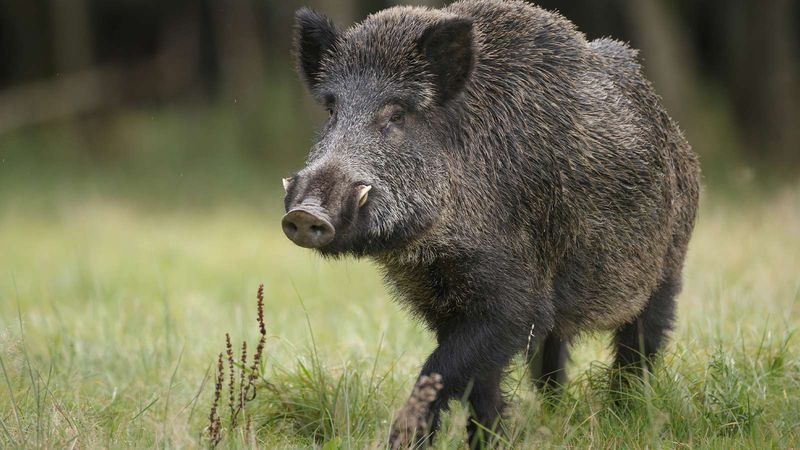
Wild boars, found across Europe, Asia, and parts of America, are known for their unpredictable nature and powerful build. With sharp tusks and a strong body, they can cause severe injuries if provoked.
Dogs that chase or confront wild boars during walks or hunts may find themselves in serious danger. A boar’s defensive aggression can lead to violent encounters.
Dog owners should keep their pets leashed in boar-populated areas and avoid provoking these animals. The wild boar’s presence in a forest might seem adventurous, but its capacity for violence is no myth. Caution and respect for their territory are essential to avoid conflict.
16. Piranha
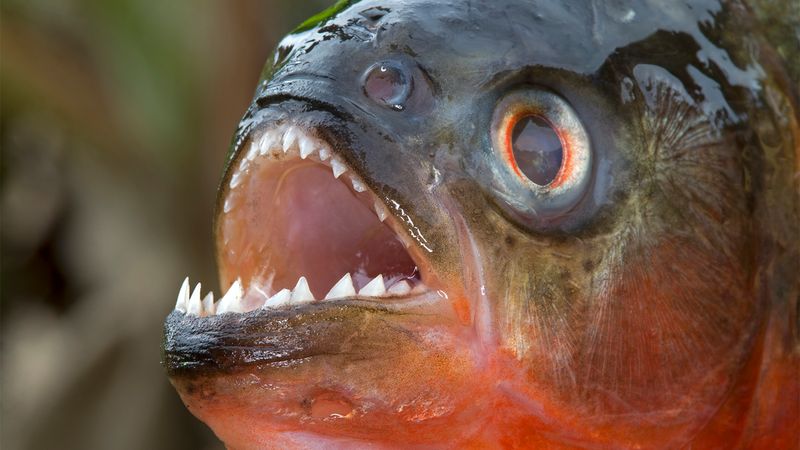
Piranhas, with their razor-sharp teeth and powerful bite, inhabit the rivers and lakes of South America. While attacks on large animals and humans are rare, they can occur if the fish feel threatened or during feeding frenzies.
Dogs swimming in piranha-infested waters may inadvertently provoke these carnivorous fish, leading to bites and injuries. The risk is higher during the dry season when food is scarce.
Dog owners should be aware of local water conditions and avoid letting their pets swim in known piranha habitats. While the legend of the piranha is often exaggerated, its potential danger, especially during specific conditions, is genuine. Precaution is the best approach to ensuring a safe aquatic adventure.
17. Rattlesnake
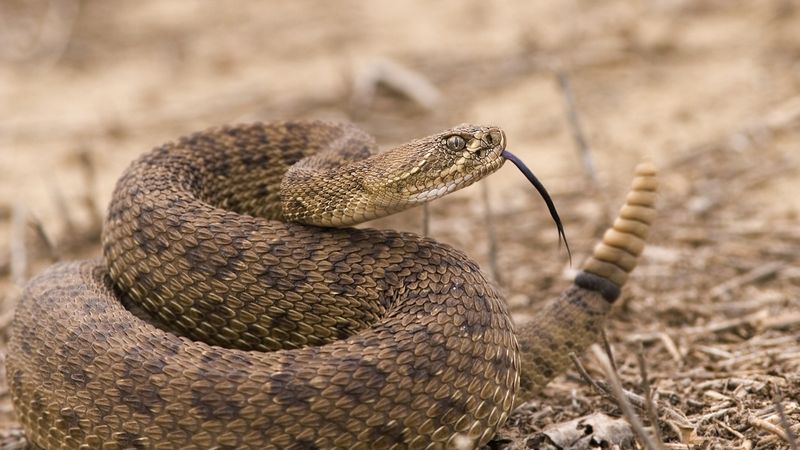
Rattlesnakes, widely found across the Americas, are known for their distinctive rattling sound and potent venom. A bite from a rattlesnake can cause severe pain, swelling, and even be lethal without prompt treatment.
Dogs exploring trails or desert areas where rattlesnakes reside may encounter these reptiles while sniffing around rocks or bushes. The snake’s warning rattle is a sign of its defensive readiness.
To prevent snake bites, dog owners should keep their pets on a leash in snake-prone areas and avoid tall grass or rock piles. The rattlesnake’s presence is a reminder that vigilance is necessary in the wild. Quick response to a bite is critical to prevent serious consequences.
18. Scorpion
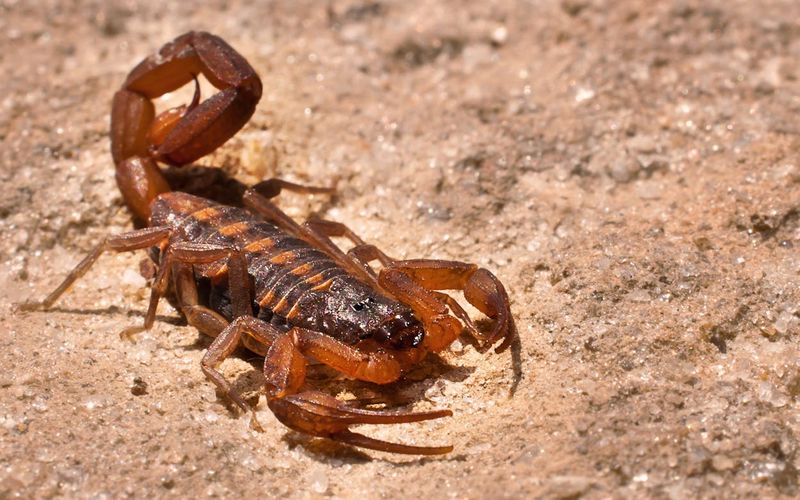
Scorpions, with their menacing pincers and venomous sting, are found in various climates around the world. Their sting can cause severe pain, nausea, and in some cases, serious allergic reactions.
Dogs inquisitive by nature might encounter scorpions while digging or exploring. The risk of an encounter is higher in deserts and arid regions.
To protect your pet, ensure they steer clear of rock piles or other scorpion habitats. Regular checks around your home can also prevent unwanted surprises. The scorpion’s intimidating appearance is matched by its potential for pain, making caution essential in areas where they are common.
19. Eagle
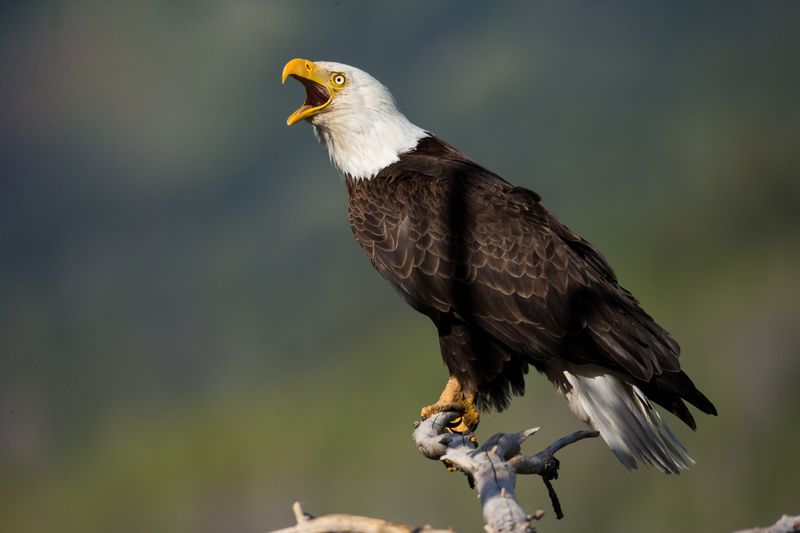
Eagles, with their powerful talons and sharp beaks, are a formidable threat to small animals. They can swoop down swiftly and silently, carrying off prey with ease. This makes them a potential danger for small dogs left unattended outside.
These birds of prey are usually found near bodies of water or in open fields. To protect your pet, supervise outdoor play and keep small dogs close. Providing a covered or screened outdoor area can offer additional safety.
It’s essential to remain vigilant, especially in rural areas where eagles are more commonly seen.
20. Electric Eel
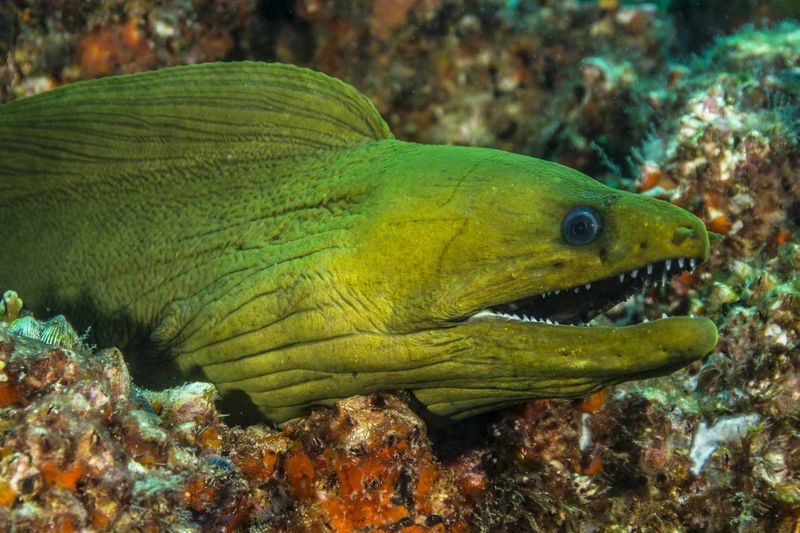
The electric eel, found in the Amazon and Orinoco basins, possesses the unique ability to generate electric shocks. These shocks are used for hunting and self-defense, posing a threat to any animal that ventures too close.
Dogs swimming in waters inhabited by electric eels may experience shocks that can cause muscle spasms or even heart failure. The electric eel’s ability to surprise makes it a formidable underwater adversary.
Dog owners should avoid allowing their pets to swim in known eel habitats. The electric eel’s presence in a river might seem intriguing, but its defensive capability is not to be underestimated. Caution ensures a safe aquatic experience.
21. Coyote
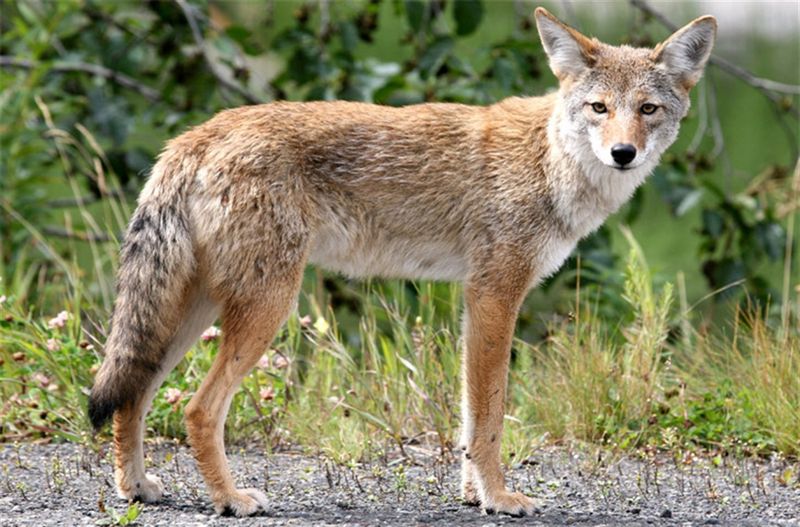
Coyotes are highly adaptable predators found throughout North America. They often venture into suburban areas, posing a threat to small dogs. These animals typically hunt in the early morning or late evening. Coyotes have been known to lure pets away from their homes. Keeping your dog on a leash during these times can prevent unexpected encounters.
Securing your yard with a tall fence can deter these clever animals. Additionally, avoid leaving pet food outside to minimize attracting them into your area. Be aware of your surroundings, especially if you live near wooded areas or parks.
22. Honey Badger
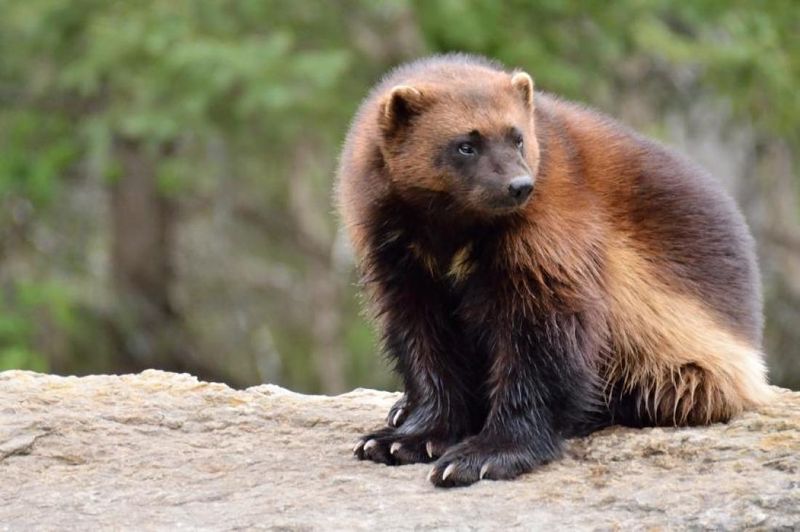
The honey badger is a small but fierce animal renowned for its strength and fearlessness. Known to take on animals much larger than itself, it will not hesitate to defend its territory against intruders, including dogs.
Despite their size, honey badgers are equipped with sharp claws and powerful jaws, making them a formidable opponent. If your dog happens to stumble upon one, it’s best to leave the area quickly.
Educate yourself about the habitats of honey badgers, and always keep a watchful eye on your surroundings to prevent unwanted encounters.
23. Wolverine
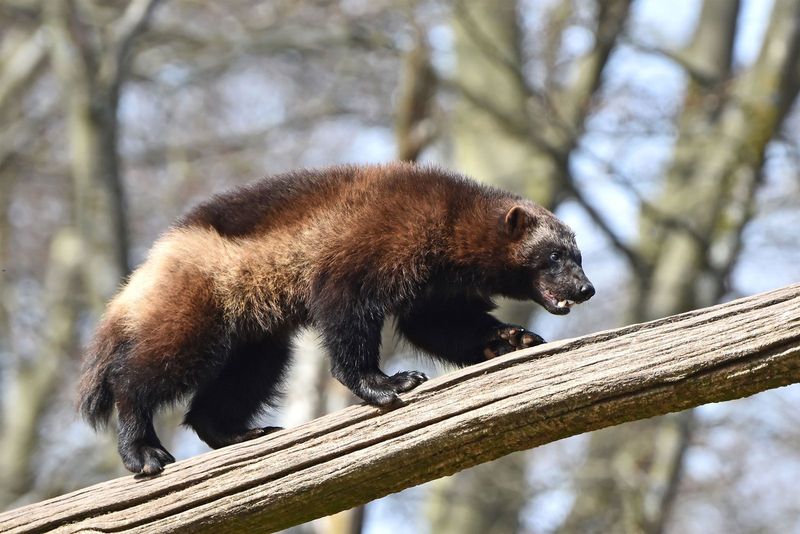
Wolverines are solitary creatures found in cold, northern climates, and are known for their strength and ferocity. Despite their reclusive nature, they can be aggressive if they feel threatened, making them a potential danger to curious dogs.
With their sharp claws and powerful bite, wolverines are capable of taking down prey much larger than themselves. If you are in wolverine territory, keep your dog close and avoid any areas marked by these formidable creatures.
Awareness and respect for their space are key to avoiding dangerous encounters with wolverines.
24. American Alligator
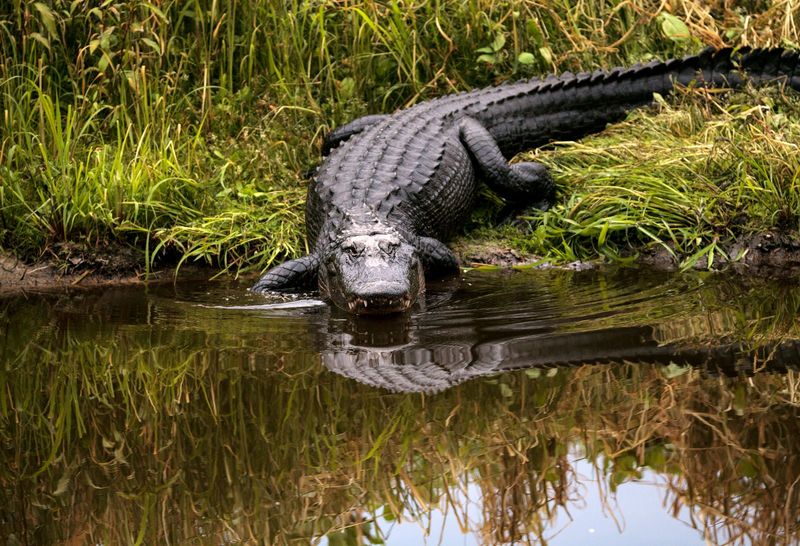
The American Alligator is a powerful predator found in the southeastern United States. It’s vital to be cautious around bodies of water in these regions, as alligators can be both swift and stealthy.
Dogs are naturally curious, which can lead them into dangerous situations near water. Always keep your dog leashed and away from the water’s edge when in alligator habitats.
By staying informed and vigilant, you can protect your pet from the lurking dangers of these formidable reptiles.




